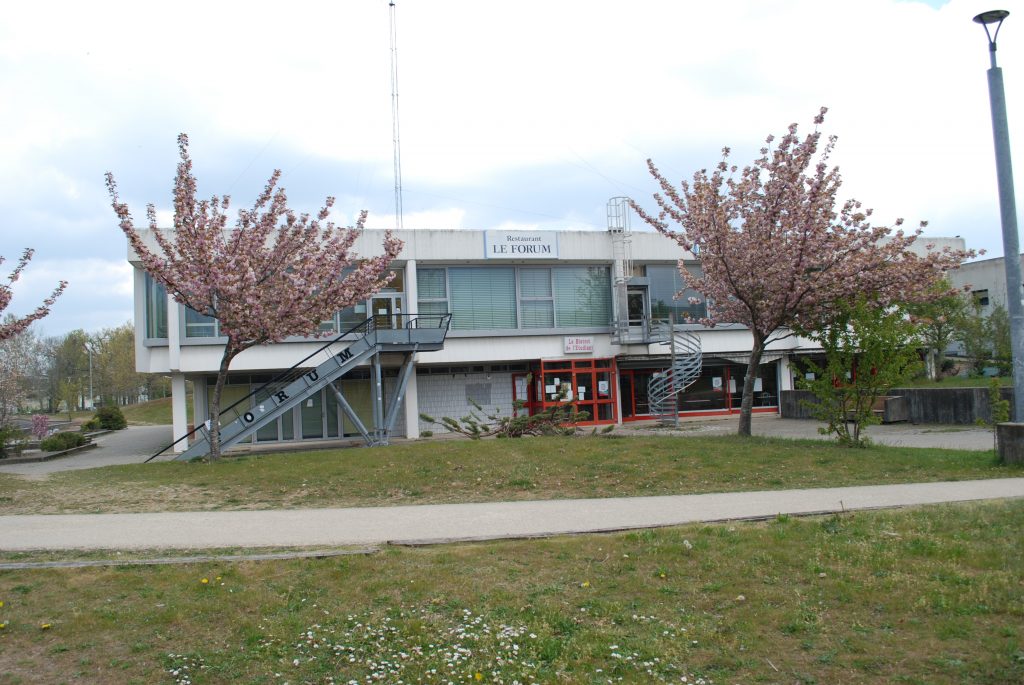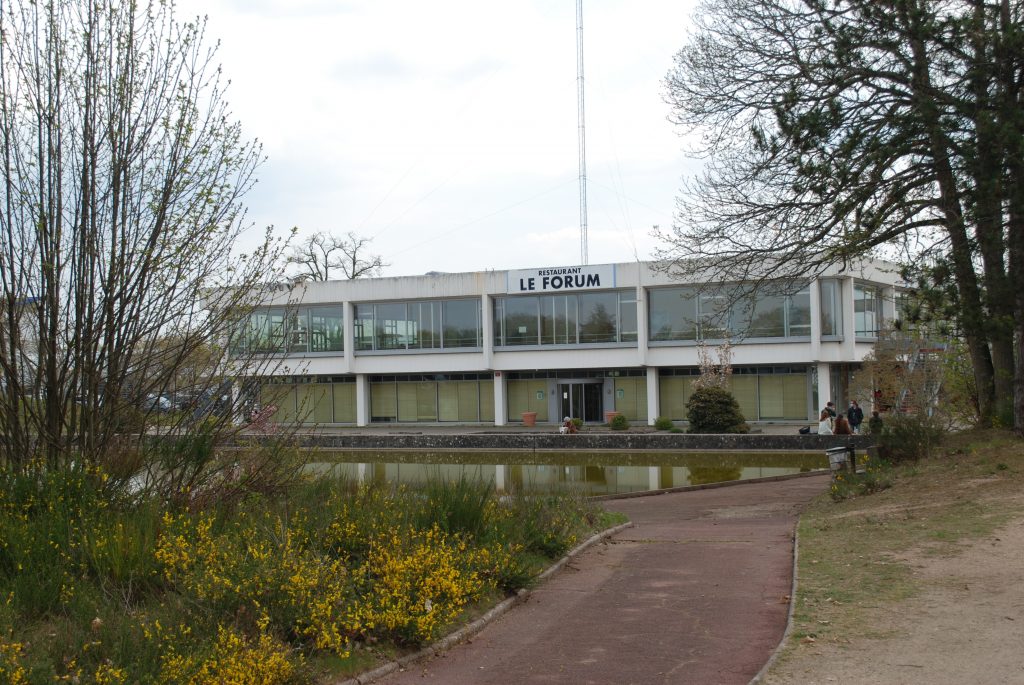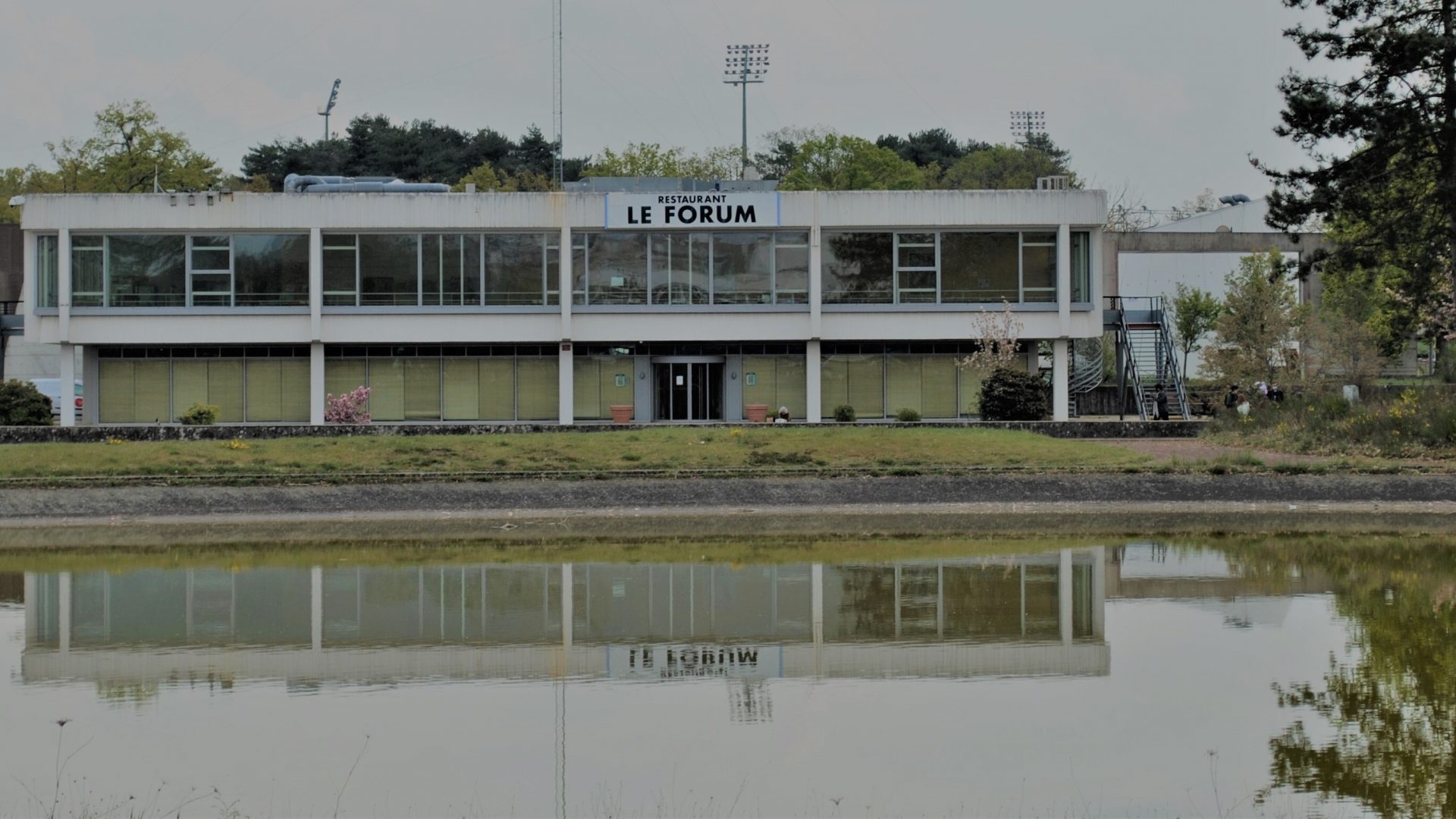The Forum University restaurant, the first achieved building on the campus.
A central position within the campus
The first building to be achieved on the university campus was not, as one might think, an educational building, but one of the three university restaurants on campus. As a matter of fact, if the first stone of the science faculty was laid in 1963, The Forum was the first construction to be completed on the campus, in 1964. Located to the east of the lake, this restaurant occupies a key position within the campus since it complements the aula magna desired by the architect Olivier-Clément Cacoub. This 324-seat catering area is made up of a set of materials that were increasingly used after the end of World War II, especially concrete, which is characteristic of the Modernist movement present on the Orleans campus.

The link with the Student House : towards better accessibility
Built by the Bollard company, which is still active on the market, the restaurant is located on the first floor of the Student House, the latter having been built by Patrice Debaque as a continuation of the restaurant. According to the architect, the dining room on the first floor posed difficulties with its accessibility, especially for people with reduced mobility. The idea was therefore to provide better access to the restaurant, inviting students to pass through the Student House, located on the ground floor. Today, this function should be put into perspective since most students choose to enter the restaurant from the outside, through the door facing the lake.
Monumentality and omnipresence of concrete: a work characteristic of modernism
The building takes the form of a quadrangle built on posts and slabs. The access steps consist of an embankment and a cement slab.
The formwork is smoothed in order to obtain rough facings, which eliminates the need for patching and plastering. In addition, the general cast concrete sill allows the creation of light alloy metal frames.
The ensemble emanates an impression of monumentality, accentuated by the geometrization of forms, the preponderance of concrete elements as well as the reduction of glass surfaces.
The use of concrete for construction is not only characteristic of the design of the Orleans campus, it is also particularly used in the context of the post-war period, where the boom of construction of residential buildings goes hand in hand with the generalization of new construction materials and techniques, such as lightweight concrete, thermal and acoustic insulation, prefabricated floor systems, or even prefabricated concrete facade panels and heavy prefabrication systems.

Internal organization and functionalism
The general organization of the building is reminiscent of the functionalist architecture of the period, for example through the generalization of collective heating.
Created according to the safety standards of 1965, the restaurant has – in addition to the canteen and its 324 places – a laundry room, a cool and ventilated garbage room, a general ventilation system, as well as a non-slip floor. It also seems necessary to emphasize that the walls are covered, over a height of two meters, with porcelain stoneware. Made up of a mixture of clay and pressed silica baked at high temperature, this technical material is highly prized by architects of the 1960s for the construction of buildings linked to communities, because its low-complexity installation is perfectly suited to the necessity of quick construction, and it is also particularly resistant.
It also meets the architects objective of pragmatism, since its lack of porosity allows easy maintenance.
The search for light and inexpensive materials is also illustrated through the use of reconstituted stone or porcelain stoneware coverings, avoiding the use of natural stone.
If you see this after your page is loaded completely, leafletJS files are missing.
